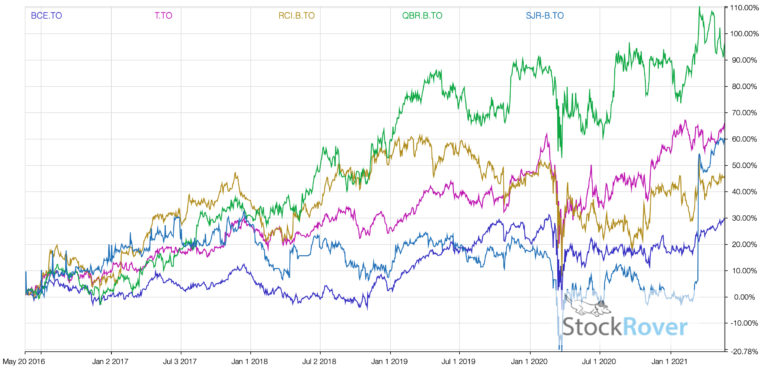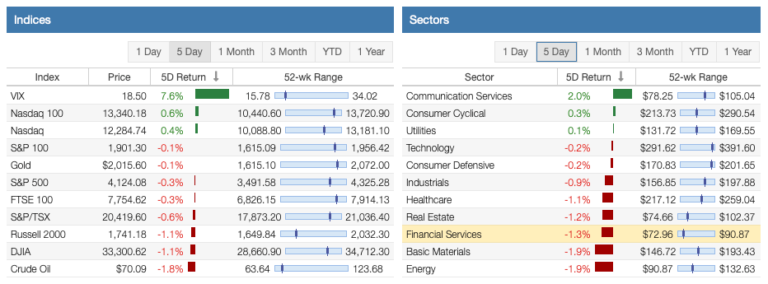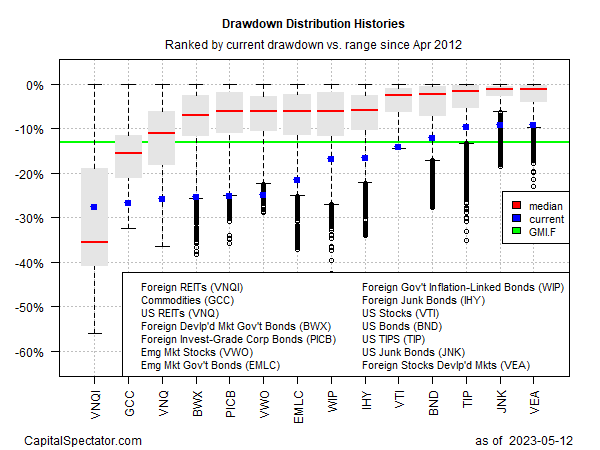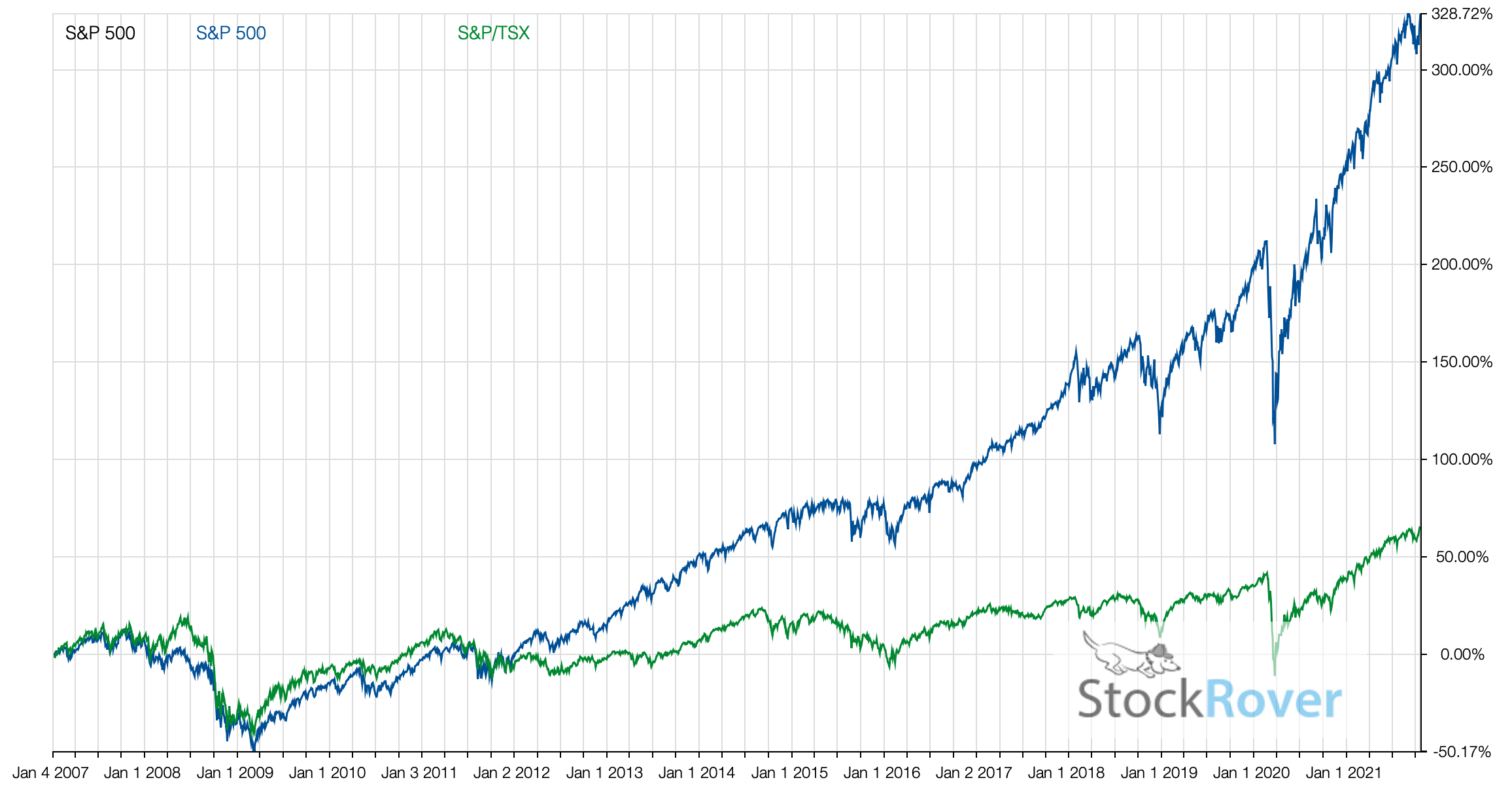
The Best S&P 500 ETFs for Canadians [Shockingly Simple!]
Looking to invest in the US market but you don’t want to deal with currency exchange? One of the easiest way to do so is to buy a Canadian ETF (Exchange Traded-Fund) that invests in the US market through a stock index such as the S&P 500 index.
Keeping it simple and cost-effective is what ETFs offer investors. ETFs have much lower fees than mutual funds and some discount brokers let you trade them for free.
One of the best US index to start with when investing in the US is the S&P 500 index (maintained by S&P Global). It’s filled with companies that are operating locally within the US but also internationally providing you with a good exposure to many economies.
It should not be a surprised to learn that it has outperform the TSX over the long term. In fact, this beginner portfolio example starts with an S&P 500 index.

What is the S&P 500 Index?
The S&P 500 Index, managed by S&P Global, is a world renowned float-adjusted market capitalization weighted Index that tracks the securities of the largest and most liquid public companies in the United States.
Constituent securities must pass minimum float-adjusted and liquidity screens to qualify and maintain membership in the Index. Index weights are reviewed quarterly.
The index includes 500 leading companies and covers approximately 80% of available market capitalization. Furthermore, the index rebalances quarterly in March, June, September, and December. (500 is not a hard number as it has 505 in the index at the time of writing)
Generally speaking, the index is considered to be a proxy of the U.S. equity market. Below are the top 10 holdings representing approximately 29% of the ETF.
Choosing Your S&P 500 ETF – To Hedge or Not to Hedge?
How can choosing an ETF that covers the S&P 500 be so confusing? Isn’t there just one index and shouldn’t all the ETFs covering the index be the same? and perform the same?
Unfortunately for Canadians, the currency conversion is the complication. While the ETF trades on the TSX in Canadian dollars, it’s replicating the US index by buying the same index on the NYSE.
Essentially, you hold a Canadian ETF that buys a US ETF. Something you could do on your own, in fact, but the asset management firms want to make it easy for investors.
To help reduce the impact of currency fluctuation, the ETF companies have create a Canadian dollar hedged version of the simple S&P 500 ETF. The desired intention is to seek a balance in the value of the ETF against the currency fluctuations.
But is the CAD-Hedge S&P 500 ETF better than its counterpart? While you can’t easily predict currency fluctuations, there is enough data to start showing which is performing better between all the S&P 500 ETFs traded in Canada.
List of S&P500 ETF for Canadians
The list of available S&P500 ETFs for Canadians is outlined below. Doesn’t seem like much when presented this way but still confusing for many.
| ETF Company | Unhedge ETF | CAD-Hedge ETF |
|---|---|---|
| Vanguard | VFV | VSP |
| Black Rock iShares | XUS | XSP |
| BMO | ZSP | ZUE |
| Horizons | HXS | HSH |
Let’s see what the various offerings have in common and where they differ.
| ETF Company | Ticker | NAV | MER | FEE | Yield | Frequency |
|---|---|---|---|---|---|---|
| Vanguard | VFV | 5.578B | 0.08% | 0.08% | 1.06% | Quarterly |
| Vanguard | VSP | 1.824B | 0.09% | 0.08% | 1.04% | Quarterly |
| iShares | XUS | 4.491B | 0.10% | 0.09% | 0.90% | Semi-Annual |
| iShares | XSP | 7.930B | 0.10% | 0.09% | 0.92% | Semi-Annual |
| BMO | ZSP | 10.150B | 0.09% | 0.08% | 1.32% | Quarterly |
| BMO | ZUE | 1.563B | 0.09% | 0.08% | 1.25% | Quarterly |
| Horizons | HXS | 2.305B | 0.10% | 0.10% | 1.38% | ? |
| Horizons | HSH | 0.220B | 0.10% | 0.10% | 1.38% | ? |
Let’s review and compare the same ETFs with currency hedging and no currency hedging to narrow down the process. There is a clear winner in each case.
VFV ETF wins over VSP ETF
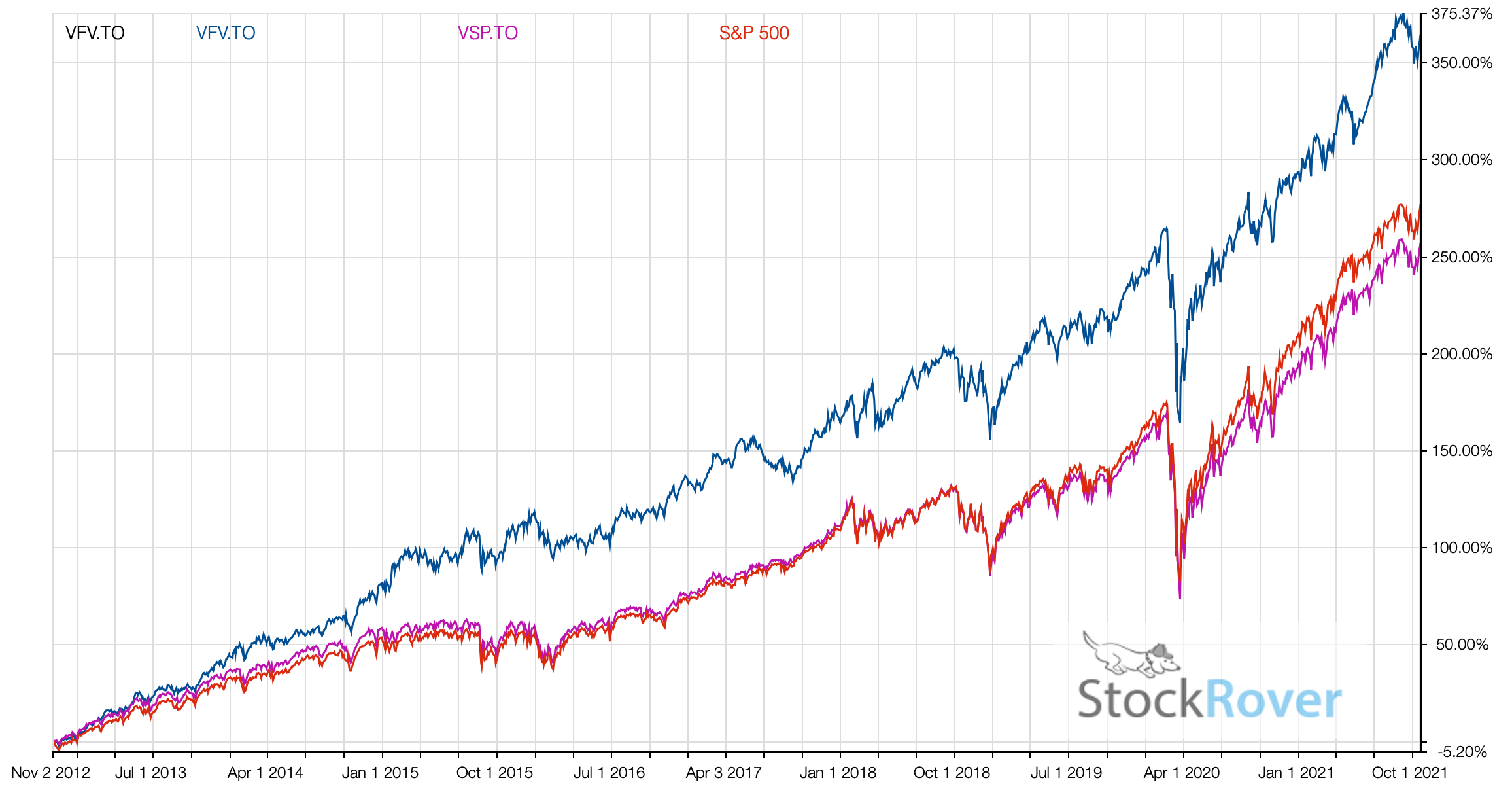
XUS ETF wins over XSP ETF
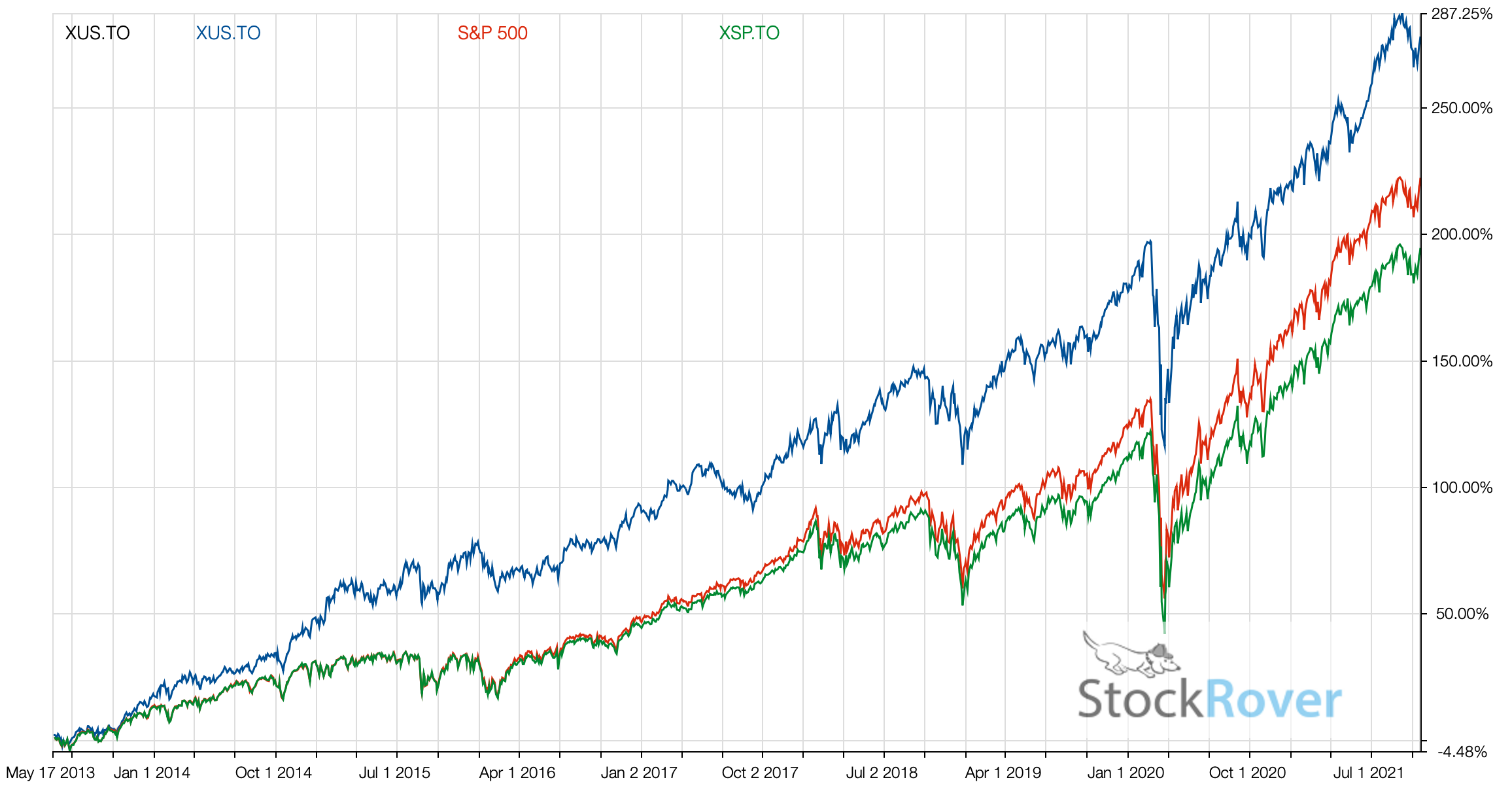
ZSP ETF wins over ZUE ETF
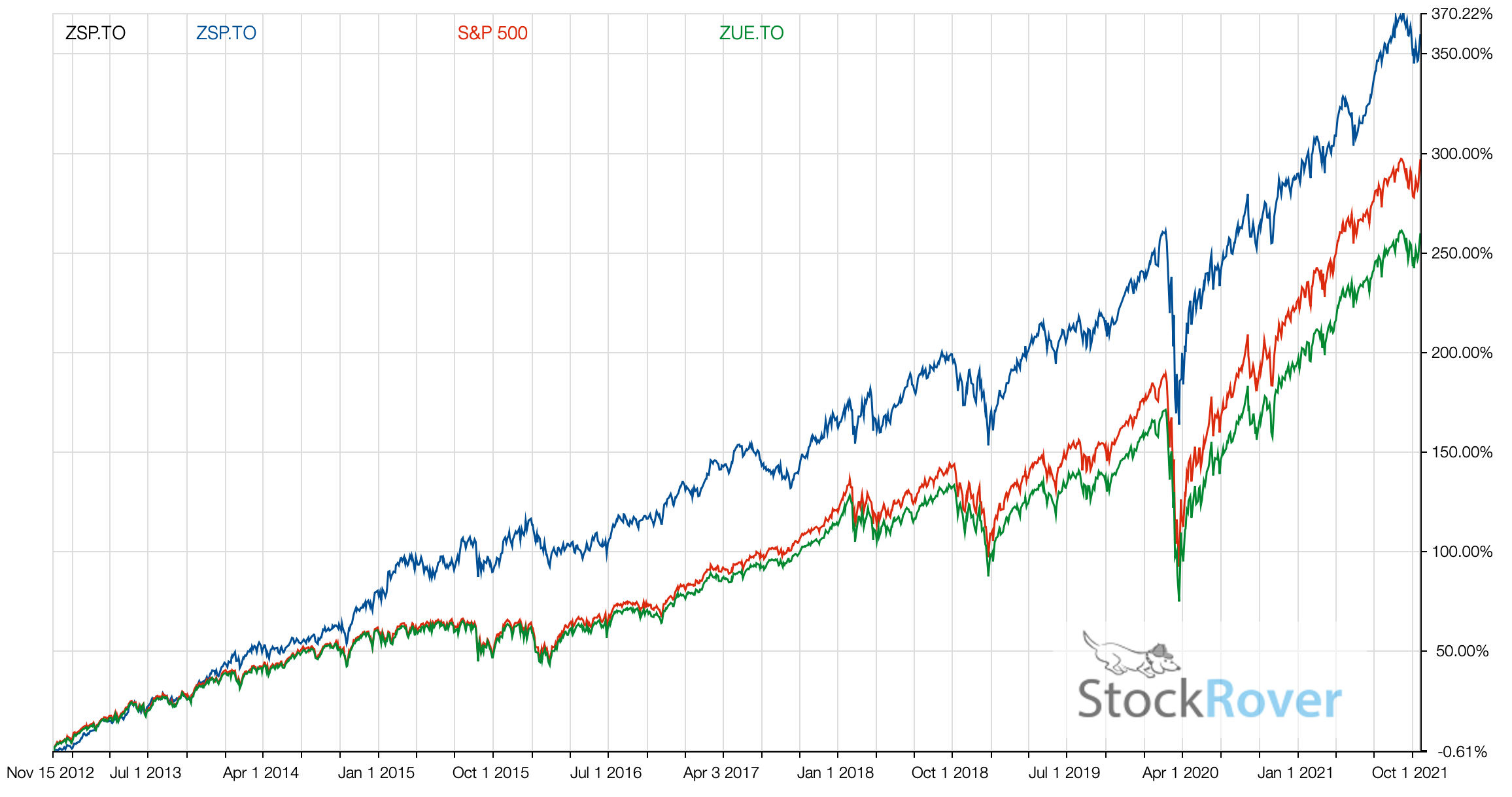
HXS ETF & HSH ETF both lose
Either of them cannot beat the S&P 500 like 3 of the others.
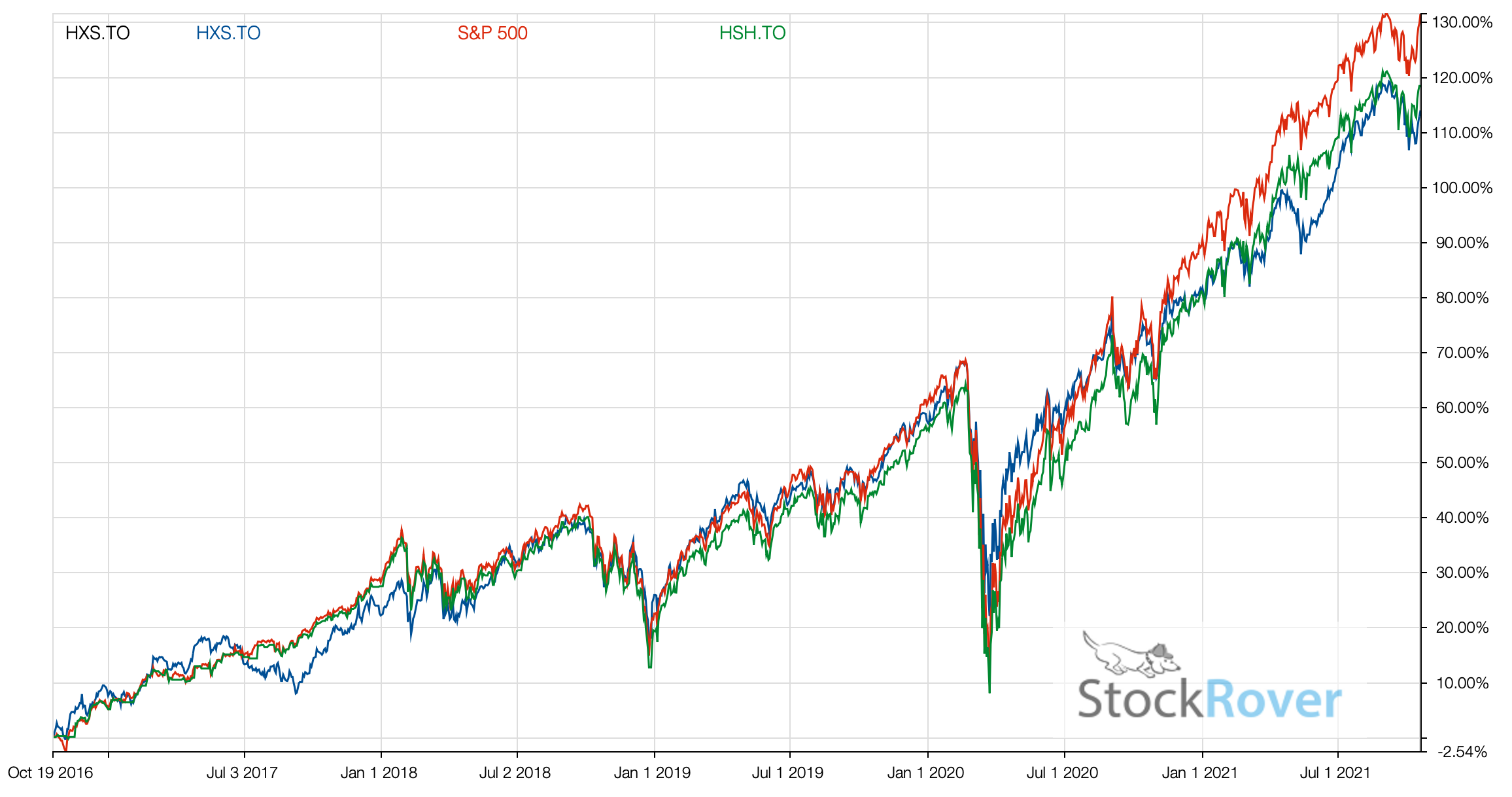
The Best S&P 500 ETFs
Once you understand what the various ETFs have in common and where they differ, the decision to select the best S&P 500 ETF is easy.
Especially after you realize that the currency-hedge version lags behind not only the S&P500 but also the non-hedge ETF
The best is now between VFV, XUS and ZSP. If you look at the graph below, representing the last 5 years, there are no clear winner between the top 3 S&P 500 ETFs. Whichever you can trade for free should be the one you go with and save on the trading fees.
Otherwise, the winner is based on the lowest MER with Vanguard leading the way with the lowest fees.
- VFV ETF – Vanguard S&P 500 Index ETF
- ZSP ETF – BMO S&P 500 Index ETF
- XUS ETF – iShares Core S&P 500 Index ETF
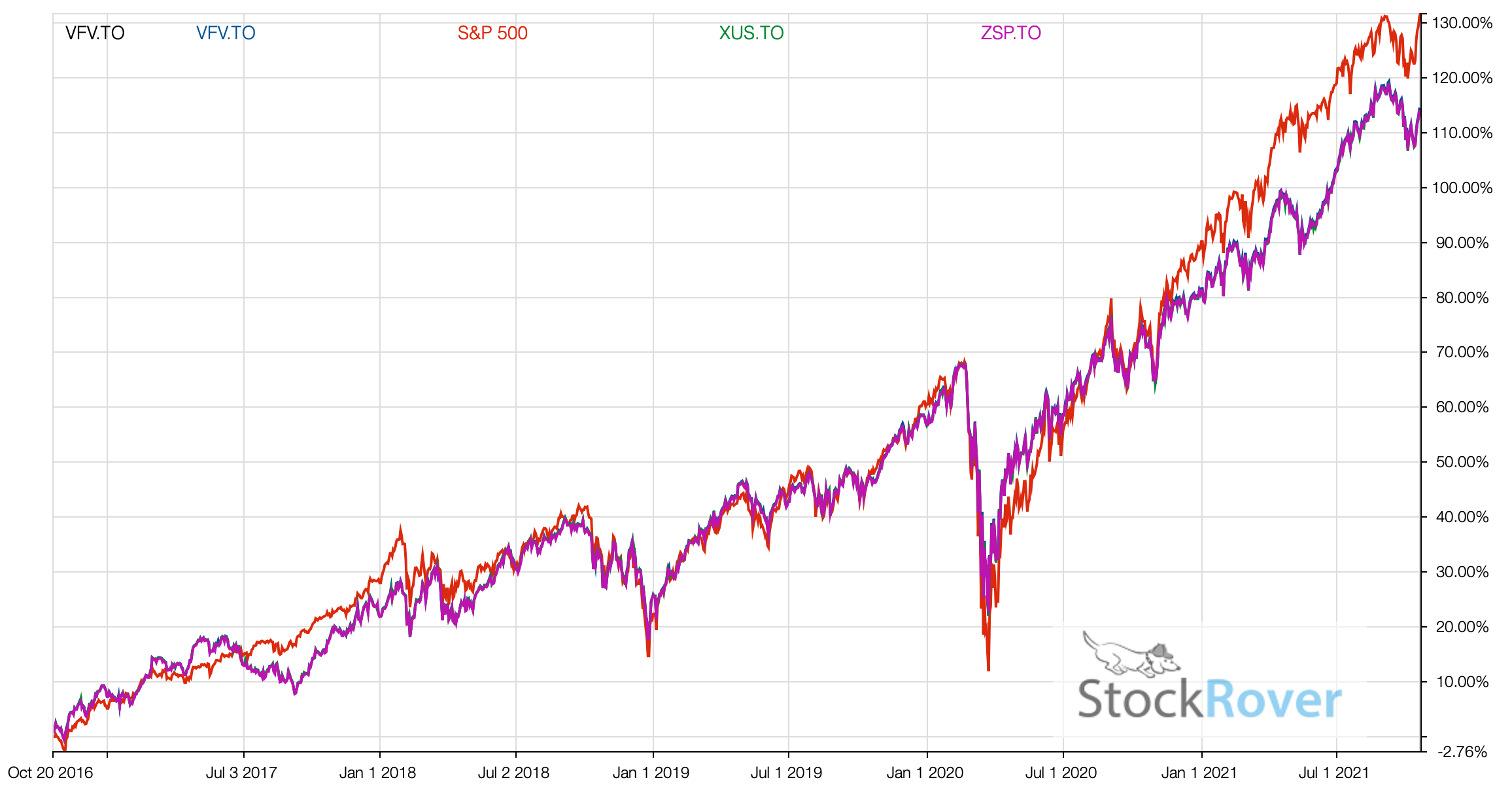
S&P 500 Canadian ETF FAQ
What Canadian ETF tracks the S&P 500?
In this article, at least 8 Canadian ETFs are identified and track the S&P 500. Half are hedge to the Canadian dollars and the other half is not.
The primary ETFs by net asset value are VFV, XUS, XSP, and ZSP.
How can I invest in S&P500 in Canada?
There are many Canadian ETFs that you can buy in Canadian dollars to get exposure to the S&P 500.
The primary ETFs by net asset value are VFV, XUS, XSP, and ZSP. They are available on the TSX and trade in Canadian dollars.
Is there a Canadian S&P 500?
No, there isn’t. The Canadian stock market is too small to have 500 stocks in such index.
There is, however, a S&P/TSX 60 managed by S&P Global which would be the equivalent of the US S&P 500.
What is the best ETF to track S&P 500?
On the Canadian side of the stock market, the best ETFs to track it would be VFV, XUS and ZSP.
Canadians have to deal with currency conversion so it’s never just a 1 to 1 ratio. If you wanted a 1:1 ratio, you should buy the US S&P500 index but you will need to exchange your Canadian dollars first.
Is S&P 500 a good investment?
As a Canadian, it definitely is a good investment as you an easily beat the Canadian market through one simple ETF such as VFV.
Do note that over a long period of time, the US market tends to outperform the Canadian market so make sure you are investing for the long run.
Do S&P 500 ETFs pay dividends?
Yes, they generally all do but it’s not a dividend per say. It’s a distribution which can include a return of capital, dividends, or capital gains. Learn the difference between a dividend and distribution.
The payment schedule is at the discretion of the fund which can be quarterly, semi-annually or annually.
Can you get rich off index funds?
Getting rich is a factor of time, return and capital. Using the simple Rule of 72, if you have a 10% return, you double your money every 7 years.
The S&P 500 VFV ETF has provided a return of 16% in my portfolio. Using the Rule of 72 again, you double your money every 4.5 years.
How fast you get rich depends on how much money you can invest.
Published at Sun, 24 Oct 2021 11:18:19 -0700
